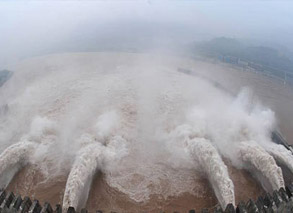Battle of the Yalu River
2009-07-20 17:59 BJT
The Battle of the Yalu River (黃海海戰, lit. Battle of the Yellow Sea), also called simply 'The Battle of Yalu' took place on September 17, 1894. It involved the Japanese and the Chinese navies, and was the largest naval engagement of the First Sino-Japanese War.
The Yalu River is the border between China and Korea, though the battle was actually fought at the mouth of this river, in the Yellow Sea. A Japanese fleet under Admiral Sukeyuki Ito was attempting to disrupt the landing of Chinese troops protected by a fleet under Admiral Ding Ruchang.
The engagement continued for most of the day, and while it was not the first of pre-dreadnought technology on a wide scale (the Battle of Foochow in 1884 between the French and Chinese predated it), there were significant lessons for naval observers to consider.
The Japanese sank five Chinese warships, severely damaged three more and killed about 850 Chinese sailors with 500 wounded. The Ting Yuen had most casualties of the Chinese vessels still afloat with 14 dead and 25 wounded.
The Chinese seriously damaged four Japanese warships — the flagship Matsushima suffered the worst single-ship loss with more than 100 dead or wounded after being hit by a heavy Chinese round; Hiei being severely damaged and retired from the conflict; Akagi suffering from heavy fire and with great loss of life; Saikyo, the converted liner, urged on by Admiral Kabayama Sukenori had been hit by four 12 inch (305 mm) shells and was sailing virtually out of control as a result, did cosmetic damage to two more, and killed about 180 Japanese sailors and wounded 200 more.
The Chinese fleet retired into Port Arthur and then to Weihaiwei, where it was finally destroyed by a combined land and naval attack. The Japanese withdrew possibly due to fear of a torpedo boat attack from the Chinese at night and also from a lack of ammunition.
Editor: Zheng Limin | Source: CCTV.com
 Mail
Mail Share
Share Print
Print


 Video
Video









 2009 China Central Television. All Rights Reserved
2009 China Central Television. All Rights Reserved